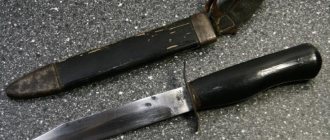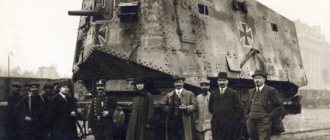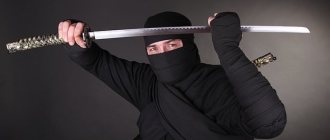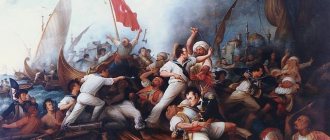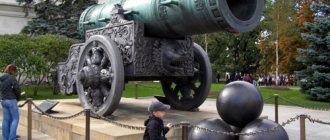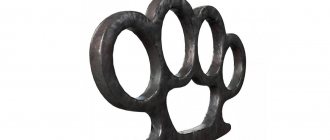The classic symbol of the Middle Ages is a knight in armor and holding a weapon in his hands. The formation of the culture of knights is directly related to the feudal system. This is due to the fact that knights often became feudal lords through faithful service to the monarch, who subsequently endowed them with land and money. After all, medieval knights were, first and foremost, professional warriors. At the head of squads or armies were knights of noble origin.
Chivalry is a privilege of the nobility
War in the Middle Ages was a privilege of the upper class, who received not only lands, but also entire villages and cities for their service. Naturally, a knight in medieval Spain, France or England was not interested in the appearance of knights - competitors. Many feudal lords prohibited the carrying of weapons not only by peasants, but also by merchants, artisans and even officials. Sometimes the contempt of medieval knights for commoners reached the point of absurdity; proud feudal lords refused to fight alongside ordinary foot soldiers, which often cost them their lives.
A real medieval knight (especially a knight in medieval Spain) had to come from a noble knightly family and know his ancestry, at least to the fifth generation. The family coat of arms and motto served as proof of the noble origin of the knights. The title of knights was inherited or given by the king for military exploits.
The appearance of the knightly classes arose in the 8th century among the Franks, when there was a transition from a foot militia to a vassal cavalry army. Under the influence of the church, the medieval cavalry became an elite military class that served high ideals. The era of the Crusades finally turned the medieval knight into a role model.
Second half of the 15th – beginning of the 16th centuries
Blacksmithing has reached such heights that one can wear almost entirely in plate armor. Before the battle, you put on a cuirass, to the lower part of which an iron skirt is attached, pull on plate gloves, and put an armet on your head - a helmet in the shape of a spherical dome with a double visor, protecting the face and neck both from the sides and from the front; You can fight in it both in spear and hand-to-hand combat. You had to spend a lot on armet - this helmet is affordable only for a wealthy knight. Those who are poorer wear salads - elongated helmets with backrests.
Greenwich armour, made for Sir James Scudamore. Todd Hoogerland / wikipedia
You don’t have a shield as such – what’s the point if you’re protected by armor? For battle, you take a steel buckler - a small round fist shield that you can use to parry blows and fight.
Before the battle, you order your horse to be dressed in bard - plate armor for horses.
The emergence of knightly cavalry
The first equivalent of knights can be called the class of horsemen in Ancient Rome. It was they who fought on horseback, often using high-quality armor, but cavalry in the Roman troops was never the basis of the army. Mounted units were intended to pursue fleeing enemies, although the heavy cavalry of the aristocrats could strike the enemy if necessary.
The beginning of the era of knights can be considered the 4th-6th centuries, when the Roman Empire fell under the blows of horse nomads. It was the Sarmatian horsemen, using heavy armor and a shield, who became the prototype of the knightly cavalry of Europe.
Since it was the nomads who became a privileged caste on the territory of the former Roman Empire, it was their combat costume (armor and weapons) that underlies the combat ammunition used by the knights of Europe. However, since there were quite a few newcomers, it took centuries before their fighting traditions could spread to Europe.
Edward the Black Prince (1330-1376)
Eldest son of King Edward III, Prince of Wales. He received his nickname either because of his difficult character, or because of the origin of his mother, or because of the color of his armor.
The “Black Prince” gained his fame in battles. He won two classic battles of the Middle Ages - at Cressy and at Poitiers.
For this, his father especially noted him, making him the first Knight of the new Order of the Garter. His marriage to his cousin, Joanna of Kent, also added to Edward's knighthood. This couple was one of the brightest in Europe.
On June 8, 1376, a year before his father's death, Prince Edward died and was buried in Canterbury Cathedral. The English crown was inherited by his son Richard II.
The Black Prince left his mark on culture. He is one of the heroes of Arthur Conan Doyle's dilogy about the Hundred Years' War, a character in Dumas's novel "The Bastard de Mauleon".
Ancient Franks - the first knights
The history of the appearance of knights in the form in which they are represented now is closely connected with the Franks. It was here that an urgent need arose for the creation of a mobile cavalry army, as cases of attacks by the Arabs who captured Spain became more frequent. The Arabs, who moved quickly on their horses, were inaccessible to the foot army of the Franks. In addition, the peasants could not serve in distant regions, so the Carolingians began to create cavalry from the nobles of the state.
Since the crown was in dire need of horsemen dressed in armor, Charles Martel and his sons began to distribute church and crown lands to their warriors, requiring them to perform mounted military service in return. If under Charlemagne a large number of infantry took part in the war, then the wars under Louis 1 and Charles 2 took place completely without the participation of infantry.
In 865, every noble vassal of the king was required to have mail or scale armor, a shield and a sword. In addition, the quit-rent population could obtain a position at the court of the lord, serving as a lightly armed cavalry. With the proper skill and a bit of luck, such a rider could earn a benefit by transferring to the heavy cavalry. The newly-minted feudal lord had to immediately purchase knightly armor, otherwise the land could be taken away. This is how a new medieval class of servants appeared, obliged to participate in the war along with their feudal lord. The best servants received fiefs and became knights.
This transition to the knightly class was practiced until the 12th century, after which, by decree of Frederick 1 (in Germany), knights became a completely hereditary class. Peasants were forbidden to carry a sword, shield and spear, and merchants had to tie a sword to their saddle, but not girdle it.
Donjons
The first castles were low wooden round or rectangular towers - donjons , standing on hills and surrounded by a palisade. Donjons were often built near rivers, which created a natural obstacle on the approaches to it. If there was no river, a moat . Stone dungeons, more reliable and protected from fires, began to appear at the end of the 10th century. But the construction of wooden castles also continued, which were cheaper and could be built even on level ground, on an artificially raised hill. The weight of heavy stone structures could only be supported by a natural hill, which limited the possibility of their construction on the plains. The peculiarity of the donjon is the absence of an entrance at ground level. It was entered through a door on the second floor, to which ladders or walkways led. By removing them, the castle defenders eliminated the surprise of an invasion.
Wooden castle of the 10th century.
History of the first castles
In France, wooden donjon castles began to appear at the end of the 9th century, when, with the weakening of the king’s power, the state began to disintegrate into principalities, and the principalities into smaller seigneuries (duchies, counties). Confirming power on his lands, the lord acquired a castle. In Spain , castles became the frontiers of the Reconquista.
At the foot of the Pyrenees Mountains stands the Spanish castle of Loarre, built in the kingdom of Aragon in 1070–1080. for protection from the Moors.
In England, the first fortifications - wooden burgh - began to be built as protection against attacks by the Norman Vikings. But the massive construction of castles in England began with the Norman Conquest. Conquering the Anglo-Saxons, the Normans built castles, the knightly garrison of which controlled the area. These castles were not only centers of defense in case of uprisings, but also centers of administrative power. On the coast, a chain of Norman castles excluded the possibility of a new conquest of England from the sea. Peasants and artisans settled around castles, as if around defenders, and castles often became the core of new cities.
Medieval knights in different European countries
Each European country had its own characteristics regarding the knightly class:
- In Germany, by the end of the 12th century, becoming a knight was not easy. If earlier a knight applicant could prove his origin in a duel, then after the publication of the “Saxon Mirror” only one whose father and grandfather were knights could be considered a knight. The Constitution of Frederick 1 prohibited peasants and priests (and their descendants) from carrying a sword;
- If we talk about French knights, then most often they were rich feudal lords, since the second sign of nobility was initiation into the knighthood. Although war often helped ordinary people become knights, it was difficult for them to acquire a set of armor, which in medieval society cost the annual income of an entire village. The unspoken rule for knighting in France was that the applicant had fief. Merchants and townspeople wishing to become knights could buy a plot of land for themselves, automatically falling into the class of feudal lords. Already in the 13th century, the purchase of land by people of non-noble birth was subject to a huge tax, although it was still possible to become a knight through the grant of a title by the king;
- Medieval England was constantly torn apart by internal wars, and England was one of the main targets for the Scandinavian conquerors. This left a very significant imprint on the formation of the knightly class of England. Kings Henry 3 and Edward 1 demanded that all captives be knighted;
- The Spanish peninsula was constantly at war with the Arabs. This made the local knights the most skilled warriors of the Middle Ages. Many knights traveled across Europe, hoping to help their Christian brothers in their endless wars with the Arab invaders.
Even at the time of the birth of chivalry, the church had a huge influence on this class. Initially, in the church, the knights swore an oath of allegiance to their king, then they swore an oath to serve the church. Serving the church meant being fair and merciful, not breaking the oath to your king, and bringing Christian morality to the pagans.
A little history
The stories that have come down to contemporaries from those “dark times” are, of course, greatly simplified, often embellished and have little in common with real life. Knights, the elite of the feudal nobility, are the most romanticized, legends about them are very popular, but, unfortunately, there is more fiction than truth in them.
Feudal fragmentation
The beginning of the Middle Ages was characterized by particular cruelty, constant wars and appalling poverty of the population . It was a world where every feudal lord was forced to defend his castle and the surrounding lands from raids with arms in hand, and at the same time sometimes attack his neighbor in order to improve his own well-being.
Mastering the art of war from a young age, landowners became fighting professionals, commonly called knights. The right of the strong was put at the forefront, brute force and its decisive use were the best qualities of a warrior; at first there was no talk of knightly honor and morality.
The development of feudalism and the creation of armies
With the development of agriculture and crafts, some feudal lords became rich, increased their influence in their region and united more modest landholdings around themselves. The first states—monarchies—emerged. The owners of the annexed lands took an oath to the king and pledged to serve in his army, bringing into it their own detachments of archers and foot soldiers from among their servants.
Gradually, the influence of the church increased in Europe, and Christian morality played an increasingly important role within European society, lowering the bar of violence.
Crusades and knightly orders
In the 11th century, Europeans, seeking to prove the superiority of their religion, began an era of Crusades against "infidel" non-Christian countries . These times can be considered the highest point in the development of knightly service. Under the auspices of the Catholic Church, knightly orders were created everywhere - organizations that had much in common with monastic orders both in terms of structure and in terms of obedience. The largest and most famous were the Templar Order, the Teutonic Order, the Livonian Order, the Order of Alcantara and others.
Members of the orders took vows of fidelity to the church, abstinence and poverty. They took part in the Crusades against the pagans of the northern countries, as well as against Muslims in the Middle East and southern Europe, and protected pilgrims traveling to the Holy Land.
Changes at the end of an era
Many knightly orders accumulated considerable wealth through plunder, as well as through trade, sometimes usury, and always the brutal exploitation of the dependent peasants of their lands. Therefore, at the end of the Middle Ages, knights had serious political influence in their own states.
But with the growth of prosperity and strengthening of power, the military component of the life and service of chivalry gradually lost its significance. Rich feudal lords paid the king a ransom for the right not to appear for service in person. The money was used to create an army of mercenaries, and a new class of professional military began to form.
Knights of the late Middle Ages began to demonstrate knightly courage and valor, the art of wielding a spear and a sword at tournaments - horseman competitions, which were very popular and attracted large numbers of spectators.
Raising a real knight
Future knights began to be trained from childhood. Training began at the age of 7 and continued until the age of 21, when the young man was officially knighted. First, boys were taught to sit in the saddle, then to wield weapons. Children were not given armor, although there are known cases when wealthy feudal lords ordered a reduced set of armor that exactly copied the armor of adult knights.
In addition, the children of noble landowners studied:
- Swimming (as the boy got older, he had to be able to swim in full combat gear);
- Fight without weapons;
- Graceful manners;
- Strategy and tactics;
- The art of capturing castles.
Soon the boys became pages at the court of a king or powerful lord. Despite the fact that the pages sported beautiful suits, their training became more difficult and grueling every year.
Grown-up pages entered the service of the knights as squires. Their task was to accompany the knight on all his military campaigns. The squire had to look after the knight's costume and armor, carry his shields and weapons, and ensure that everything was in perfect condition.
Only after this were young people knighted and given the right to wear the family coat of arms on the field of their shield.
Since, besides war, only hunting was considered an activity worthy of a knight, young people were taught all the intricacies of this matter.
Sid Campeador (1041(1057)-1099)
The real name of this famous knight was Rodrigo Diaz de Vivar. He was a Castilian nobleman, a military and political figure, a national hero of Spain, a hero of Spanish folk legends, poems, romances and dramas, as well as the famous tragedy of Corneille.
The Arabs called the knight Sid. Translated from folk Arabic, “sidi” means “my master.” In addition to the nickname "Sid", Rodrigo also earned another nickname - Campeador, which translates as "winner".
Rodrigo's fame was forged under King Alfonso. Under him, El Cid became commander-in-chief of the Castilian army. In 1094, Cid captured Valencia and became its ruler. All attempts by the Almorravids to reconquer Valencia ended in their defeats in the battles of Cuarte (in 1094) and Bairen (in 1097). After his death in 1099, Sid became a folk hero, sung in poems and songs.
It is believed that before the final battle with the Moors, El Cid was mortally wounded by a poisoned arrow. His wife dressed Compeador's body in armor and mounted it on a horse so that his army would maintain its morale.
In 1919, the remains of Cid and his wife Doña Jimena were buried in the Burgos Cathedral. Tizona, a sword believed to have belonged to Sid, has been located here since 2007.
Code of Honor of Medieval Knights
Solidarity was extremely developed among medieval knights. One of the clearest cases of such solidarity occurred during the war between the Franks and Saracens. Before the battle, one of Charlemagne's best knights challenged a Saracen knight to a duel. When a French knight was captured by deception, the Saracen voluntarily surrendered to the enemy in order to be exchanged for the knight captured by deception.
The Code of Knightly Honor is known to us from numerous written sources. The knight's code is based on:
- Loyalty to your master;
- Cult of the Beautiful Lady;
- Serving the ideals of the church.
Service to the church led to the creation of knightly orders. They appeared during the Crusades. Knights in such orders were considered crusader monks and wore robes over their armor. In addition, their shield was decorated with the emblem of a cross.
Finding differences
The weapon is received - losing it is tantamount to death. The greatest shame for the German soldiers. The next step is joining the squad. A contest of strength and an oath, followed by the acquisition of rank from the chief. But still, the main criteria for selection are nobility and valor. Position in society, family prestige, reputation and merits of the warrior’s father - all this affects the position of the newly minted warrior. One cannot fail to match the level of courage and valor of one's leader. To leave the battle with the loss of the head of the squad is a shame and an unforgivable thing.
The battle of the Romans with the Germans. Source: pinterest.com
How to support such a combat unit? Of course, with a good salary and a share in the robberies, horses and abundant feasts.
Issues related to consanguinity were resolved without fail. A warrior never compromised on the honor of his family. Similar characteristics can also be attributed to the knightly families of the Middle Ages.
Cavalry of Charlemagne. (medievalmuseum.ru)
The valor of real knights
Every medieval knight had to strive to possess the following qualities:
- Courage in battle (a real knight could fight an entire army without flinching);
- Loyalty (implying loyalty to one's master);
- Generosity;
- Moderation;
- Refinement in communication.
The main knightly commandments were as follows:
- Always stand up for the interests of the church;
- Help the weak and disadvantaged;
- Fight for your country and king;
- Keep your word;
- Fight evil in all its manifestations.
Naturally, a fairly small percentage of the knightly class possessed a set of such qualities, but many strove precisely for this ideal.
Three Types of Ministry
Medieval knights took three types of vows: they swore an oath to serve either God, the common people, or a beautiful lady. The division, of course, is conditional, but nevertheless meant the following:
- Serving the people is an obligation to protect one's lands from enemies, as well as to help the poor. Example - Sir Gawain from the legends of King Arthur.
- Serving the Lord meant devotion to God and the church, the desire to always act on the side of good and bright forces. The example is Sir Percival.
- Serving a lady is the worship of one chosen woman, and in general a gallant and reverent attitude towards everyone else. A prominent representative is Sir Lancelot.
Admiration for the beautiful lady originates from the cult of the deification of the Virgin Mary as the path to salvation for man. It is interesting that the reverent attitude towards the Holy Virgin contrasted sharply in the Middle Ages with the attitude towards women in life, which placed them in a strictly subordinate position and considered them to be third-class creatures. If girls of a noble family were still somehow valued, among the lower classes they were often considered a source of evil and sin.
Weapons and tactics of medieval knights
If the sword, shield and spear have always been the main weapon and protection of the knight, armor has gradually evolved over the centuries. Starting with chain mail and light shields in the early Middle Ages, in the 14th century the knight's protection consisted of full armor and a heavy shield.
With the development of armor, the weapons of knights also evolved. Swords began to be used for stabbing, which made them heavier. The spears also became more massive. Only battle axes remained virtually unchanged; their power was still sufficient to both cut through chain mail and cut through solid armor.
In battle, each knight was accompanied by squires, whose task was to help the knight during the battle. Rich feudal lords often took their own detachment into battle, from people loyal to themselves.
The blow of the knight's cavalry was an iron wedge that crushed the unprepared enemy in the blink of an eye. Unfortunately, for a sufficient run-up, the knightly cavalry needed a flat area, so knightly skirmishes took place on the plains.
In peacetime, knights trained in tournaments using blunted weapons.
The end of the 14th - first half of the 15th century
Gambeson is no longer in trend; under the chain mail you wear an aketon, a quilted jacket with sleeves. It is not so long and thick, it is not stuffed with anything - it is simply sewn from several layers of fabric. If you have money, your aketon is equipped with chainmail inserts.
Chain mail is gradually giving way to plate armor - the most varied. You can use individual elements of armor - bibs, plastrons and placards (cover the stomach), bracers (protect the forearm), elbow pads, knee pads and greaves. Or you can, after spending a fair amount of money, buy plate cuirasses - metal shells that cover the chest and back.
On your head you put a bascinet - a metal helmet with a pointed top. Attached to it along the lower edge is a chain mail cape that protects the neck, back of the head and shoulders - aventail. The bascinet is a relatively lightweight helmet that can be worn even by infantrymen. They can be very different - with nose guards, with visors-masks, with visors in the form of a holey beak (hundsgugels). There are also grand bascinets - round helmets with plate neck protection and a perforated hemispherical visor.
Italian bascinet. David Monniaux/wikipedia
Instead of a rather long surcoat cape, they now wear a shorter zhupon or tabar: all of Europe is trying to shorten clothes. Shields are still worn small.
Knight's castles
Since the Middle Ages were filled with wars and skirmishes, every knight dreamed of building his own castle. The construction of such a fortress required huge financial investments. But the finished fortress became the center of life of the entire area. It was here that fairs were held, traders and artisans came here, who gradually built up the surrounding area with their houses and trading shops. In case of danger, a knight could open the gates of his castle and shelter everyone behind impenetrable walls.
Some castles earned notoriety; during the time of the “wildness” of the knights, they became real robber nests, from where the robber knight attacked passing merchants.
The era of knights ended soon after the advent of firearms. Bullets easily penetrated even the best armor, so wearing heavy armor became impractical. Despite this, knights forever remained in the hearts of people, symbolizing honor and dignity.
Bertrand Du Guesclin (1320-1380)
The outstanding military leader of the Hundred Years' War, Bertrand Deguclin, in his childhood bore little resemblance to the future famous knight.
According to the troubadour Cuvelier from Tournai, who compiled Du Guesclin’s biography, Bertrand was “the ugliest child in Rennes and Dinant” - with short legs, too broad shoulders and long arms, an ugly round head and dark “boar” skin.
Deguclin entered the first tournament in 1337, at the age of 17, and later chose a military career - as researcher Jean Favier writes, he made war his craft “as much out of necessity as out of spiritual inclination.”
Bertrand Du Guesclin became most famous for his ability to storm well-fortified castles. His small force, supported by archers and crossbowmen, stormed the walls using ladders. Most castles, which had small garrisons, could not withstand such tactics.
After the death of Du Guesclin during the siege of the city of Chateauneuf-de-Randon, he was given the highest posthumous honor: he was buried in the tomb of the French kings in the Church of Saint-Denis at the feet of Charles V.
Armored codpieces protected the genitals in battle
Photo: Andy Carvin / Flickr
You may have seen these funny phallic protrusions in photographs of knightly armor, often decorated with patterns, images of faces and other things. This thing is called a “codpiece”, and many believe that it was intended to protect manhood.
But in fact, the codpiece is an exclusively fashionable accessory Arms and Armor - Common Misconceptions and Frequently Asked Questions, which allows you to convince others of the magnitude of the knight’s courage and impress gullible ladies. It had no practical load - codpieces were sewn onto ordinary trousers.
And knights, who cared more about safety than about Fashion in European Armor, wore chainmail skirts and gaiters without codpieces.
The owners of flamberges were also not very popular
Two-handed sword with a “flamberge” blade, 1550. Image: The Cleveland Museum of Art
By the way, there is another similar myth - that the owners of flamberges, swords with a wavy blade, were also not taken prisoner. These weapons caused terrible wounds, and their owners were allegedly so hated that they were killed on the spot. However, this is also not true: these fighters were killed no more often than others.
It’s just that the flamberge has received special distribution L. Funcken, F. Funcken. Historische Waffen und Rüstungen: Ritter und Landsknechte vom 8. bis 16. Jahrhundert already in the 16th century during the religious wars between Protestants and Catholics. And they were attended by Swiss pikemen and German landsknechts who hated each other. And these guys didn’t take prisoners, even if he was armed with a flamberge, even a penknife, even just one toothpick.
It is not necessary to wear a helmet
Northern warriors do not wear helmets.
Still from the series “Game of Thrones” Watch any “historical” or fantasy film or series with large-scale battle scenes. Surely all the heroes in it will go into battle in more or less decent armor, but with bare heads. And if there are helmets, it will only be for the extras running in the background—the main characters can do without them.
If according to the scenario it’s too early to die, then at least attack naked - all the arrows will fly by.
From a cinematic point of view, it is clear why Jon Snow and Ragnar Lothbrok do not wear protection on their heads: to make it easier for the viewer to recognize their faces in wide shots.
But in a real medieval battle, they would not have fared well: an arrow that accidentally flew into the head during flight or a piece of a spear stuck under the ear would not make anyone feel good. And helmets were designed to protect against such troubles.
Most medieval warriors could go to war even without chain mail, wearing only quilted clothing, but they did not forget their helmets. Head injuries were one of the main causes of 1. N. Nicklisch, F. Ramsthaler. The face of war: Trauma analysis of a mass grave from the Battle of Lützen (1632) / PLOS One 2. Medieval helmets / Living History Archive of death on the battlefield. So there was nothing to do in battle without a special hat.
You can cut a pike with a sword
Two-handed sword with counterguard, Italy, Venice, 1570.
Image: The Met Collection Take a look at this superb example of a 16th century weapon. This is a Zweihander E. Oakeshott. European Weapons and Armour: From the Renaissance to the Industrial Revolution (two-handed) - a long sword used by Landsknechts, German mercenaries. Those who were armed with it were called doppelsoldners, or “double soldiers,” that is, warriors with double pay. In general, all Europeans had two-handed swords: claymores among the Scots, espadons among the Swiss and French, greatswords among the English, and so on. But the Zweihänder is the most impressive of them all. It has a wide guard to deflect attacks and protect the fencer's hand, and a curved counterguard to parry blows.
The length of this sword, including the hilt, could reach two meters, but was usually 1.4–1.8 meters.
There is a very popular myth floating around the Internet about what such a machine was used for. Allegedly, the Landsknechts fought in formation, gathering in a so-called battle and putting long sharp peaks in front of them. If two enemy formations came together in a fierce battle, the doppelsoldners entered the battle.
Specially trained brave men walked ahead of their comrades, pushing aside and cutting off the enemy's pikes with their zweihanders as they walked. This made it possible to break through the enemy formation, mix up the formations and kill everyone. The owners of the zweihänder, called masters of the long sword, took the most risks, which is why they were especially respected.
Duel with two-handed swords, fencing book of Hans Medel von Salzburg, 15th century. Image: Public Domain
It sounds cool, but it's not true. It is not always possible to cut a pike and an ax on a grand scale, let alone with a sword, and even more so in close combat. Have you tried Can Swords Cut through a Spear Shaft? / Lil Mao reenactors and fencers. And nothing worked out for them.
And the myth appeared because of the book by P. von Winkler. Weapons "Weapons" by the 19th century Russian historian Pavel von Winkler. He clearly had a slightly wrong idea about two-handed fighting.
By the way, it is incorrect to say that only a real hero can lift a zweihander: on average, these colossus weighed only 2–3.5 kilograms. Weight of individual specimens J. Clements. The Weighty Issue of Two-Handed Greatswords / The Association for Renaissance Martial Arts reached a maximum of 6.6 kilograms - this is what the legendary Frisian hero Pierre Gerlofs Donia allegedly owned. But such weapons were never used in battle, because they were extremely inconvenient, and served only for parades and ceremonies.
